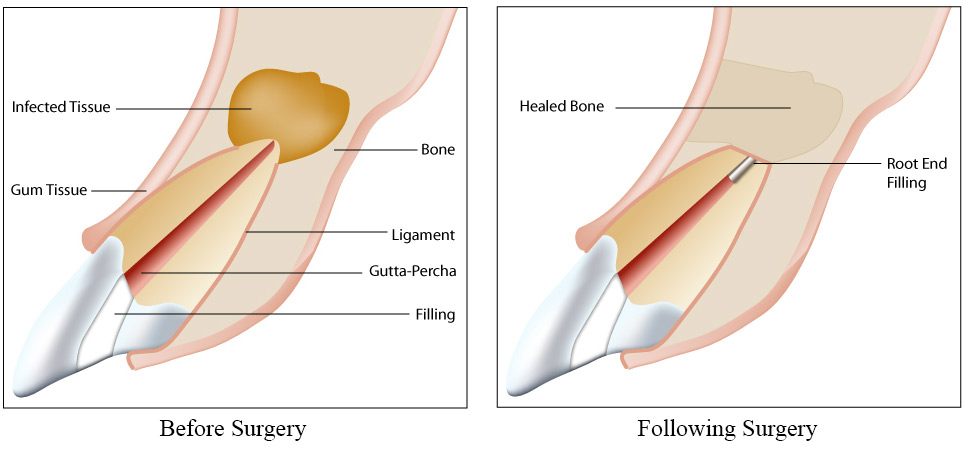Fill out these details and we will get in touch with you at the earliest.
Your teeth are held in place by roots that extend into your jawbone. Front teeth usually have one root. Other teeth, such as your premolars and molars, have two or more roots. The tip of each root is called the apex.
An apicoectomy may be needed when an infection develops or persists after root canal treatment, or retreatment. During root canal treatment, the canals are cleaned and inflamed or infected tissue is removed. Root canals are very complex, with many small branches off the main canal. Sometimes, even after root canal treatment, infected debris can remain in these branches and possibly prevent healing or cause re-infection later. In an apicoectomy, the root tip, or apex, is removed along with the infected tissue. A filling is then placed to seal the end of the root.
If a root canal becomes infected again after a root canal has been done, your dentist can do an apicoectomy to fix the problem so the tooth doesn't need to be extracted. An apicoectomy is done only after a tooth has had at least one root canal procedure.
An apicoectomy is sometimes called endodontic microsurgery because the procedure is done under an operating microscope.

The endodontist will cut and lift the gum away from the tooth so the root is easily accessible. The infected tissue will be removed along with the last few millimeters of the root tip.
To complete the apicoectomy, 3 to 4 millimeters of the tooth's canal are cleaned and sealed. The cleaning usually is done under a microscope using ultrasonic instruments. Use of a surgical microscope increases the chances for success because the light and magnification allow the endodontist to see the area better. Your endodontist then will take an X-ray of the area before suturing the tissue back in place.
Most apicoectomies take between 30 to 90 minutes, depending on the location of the tooth and the complexity of the root structure. Procedures on front teeth are generally the shortest. Those on lower molars generally take the longer.
If this condition is left untreated then the infection will develop into an abscess or cyst. You will be suffering from pain, and your tooth will become loose.
This is a surgical procedure where the infection needs to be removed. Cleaning out the infection from the bone, and after removing a small portion of the tip, the sealing is done with a small filling. The whole procedure will take 30 minutes.
You may face little discomfort once the effect of anesthesia is over. You may be recommended pain killers and a course of antibiotics. Some swelling can occur both inside & outside the mouth which will stay for about two days. You need to take care and keep the area as clean as possible for the first few weeks after surgery.
Another surgery done to prevent you from bone loss and protect your gum disease is Bone graft surgery.
Bone grafting procedures can be performed combined with the flap surgery is the procedure that is followed when there is substantial amount of bone loss around the teeth.